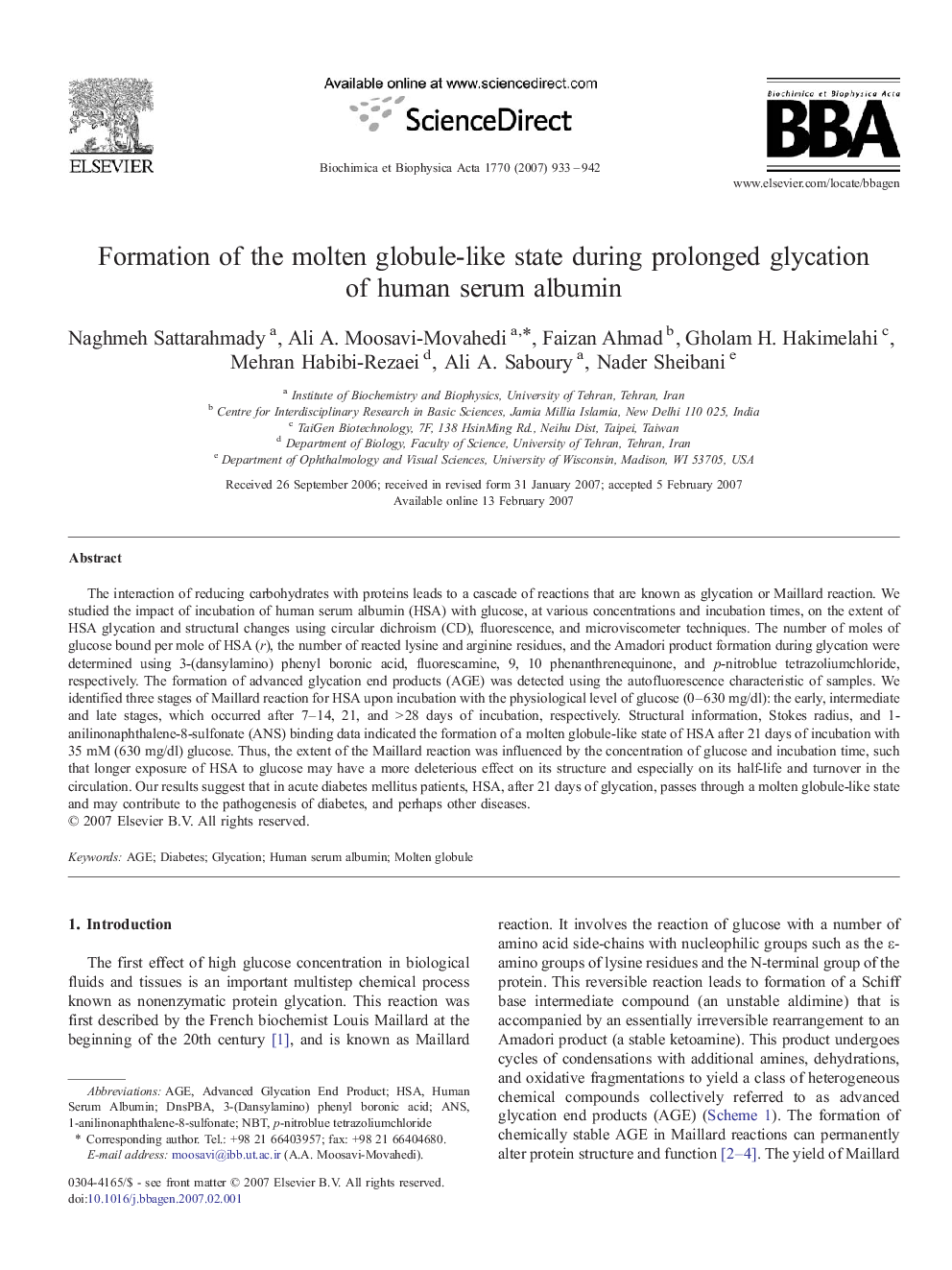| Article ID | Journal | Published Year | Pages | File Type |
|---|---|---|---|---|
| 1948545 | Biochimica et Biophysica Acta (BBA) - General Subjects | 2007 | 10 Pages |
The interaction of reducing carbohydrates with proteins leads to a cascade of reactions that are known as glycation or Maillard reaction. We studied the impact of incubation of human serum albumin (HSA) with glucose, at various concentrations and incubation times, on the extent of HSA glycation and structural changes using circular dichroism (CD), fluorescence, and microviscometer techniques. The number of moles of glucose bound per mole of HSA (r), the number of reacted lysine and arginine residues, and the Amadori product formation during glycation were determined using 3-(dansylamino) phenyl boronic acid, fluorescamine, 9, 10 phenanthrenequinone, and p-nitroblue tetrazoliumchloride, respectively. The formation of advanced glycation end products (AGE) was detected using the autofluorescence characteristic of samples. We identified three stages of Maillard reaction for HSA upon incubation with the physiological level of glucose (0–630 mg/dl): the early, intermediate and late stages, which occurred after 7–14, 21, and > 28 days of incubation, respectively. Structural information, Stokes radius, and 1-anilinonaphthalene-8-sulfonate (ANS) binding data indicated the formation of a molten globule-like state of HSA after 21 days of incubation with 35 mM (630 mg/dl) glucose. Thus, the extent of the Maillard reaction was influenced by the concentration of glucose and incubation time, such that longer exposure of HSA to glucose may have a more deleterious effect on its structure and especially on its half-life and turnover in the circulation. Our results suggest that in acute diabetes mellitus patients, HSA, after 21 days of glycation, passes through a molten globule-like state and may contribute to the pathogenesis of diabetes, and perhaps other diseases.
